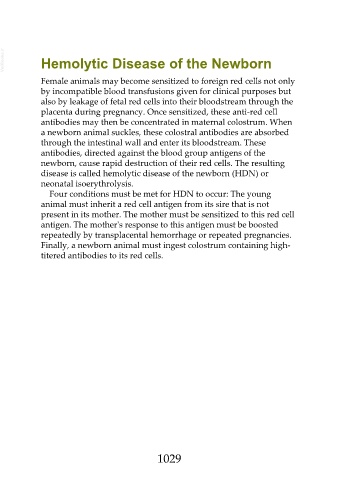Page 1029 - Veterinary Immunology, 10th Edition
P. 1029
VetBooks.ir Hemolytic Disease of the Newborn
Female animals may become sensitized to foreign red cells not only
by incompatible blood transfusions given for clinical purposes but
also by leakage of fetal red cells into their bloodstream through the
placenta during pregnancy. Once sensitized, these anti-red cell
antibodies may then be concentrated in maternal colostrum. When
a newborn animal suckles, these colostral antibodies are absorbed
through the intestinal wall and enter its bloodstream. These
antibodies, directed against the blood group antigens of the
newborn, cause rapid destruction of their red cells. The resulting
disease is called hemolytic disease of the newborn (HDN) or
neonatal isoerythrolysis.
Four conditions must be met for HDN to occur: The young
animal must inherit a red cell antigen from its sire that is not
present in its mother. The mother must be sensitized to this red cell
antigen. The mother's response to this antigen must be boosted
repeatedly by transplacental hemorrhage or repeated pregnancies.
Finally, a newborn animal must ingest colostrum containing high-
titered antibodies to its red cells.
1029

